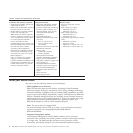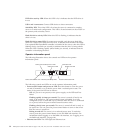
Table 2. Features and specifications (continued)
Scalability and memory expansion:
v Eight-socket scalability option uses
4 QPI external cables
v Multi-node configurations require 4
microprocessors in each node
v MAX5 memory expansion module
option uses four QPI ports
Note: When you add an optional
memory expansion module to your
server configuration and you plan
to use the optional USB flash
device with VMware EXSi
embedded hypervisor software, see
the documentation that comes with
the USB flash device and the
operation system installation
instructions for installing VMware
ESXi (or ESX, depending on your
enviroment) on your server at the
IBM websight at
http://www.ibm.com/systems/
support/. The documentation
provides additional installation and
configuration information that you
need to follow before you use the
memory expansion module.
Integrated functions:
v Integrated management module
(IMM), which provides service
processor control and monitoring
functions, video controller, and
remote keyboard, video, mouse,
and remote hard disk drive
capabilities
v Light path diagnostics
v Eight Universal Serial Bus (USB)
ports (2.0)
– Four on rear of server
– Two on front of server
– Two internal
v Broadcom 5709 dual 10/100/1000
MB Ethernet controller
v Matrox video
– 16 MB video memory
– SVGA compatible
v Serial-attached SCSI (SAS)
controller with RAID capabilities
v Support for ServeRAID-BR10i
SAS/SATA controllers (Types 7145
and 7146 only) or
ServeRAID-M1015 SAS/SATA
controllers (Types 7143 and 7191
only) and ServeRAID-M5015
SAS/SATA/SSD controllers (all
Types)
v Serial connector
v QPI Expansion Ports
Electrical input:
v Sine-wave input (50 - 60 Hz)
required
v Input voltage low range:
– Minimum: 100 V ac
– Maximum: 127 V ac
v Input voltage high range:
– Minimum: 200 V ac
– Maximum: 240 V ac
v Approximate input kilovolt-amperes
(kVA):
– Minimum: 0.20 kVA
– Typical: 1.12 kVA
– Maximum: 1.95 kVA (110 V ac)
– Maximum: 2.17 kVA (220 V ac)
What your server offers
The server uses the following features and technologies:
v UEFI-compliant server firmware
IBM UEFI firmware offers several features, including Unified Extensible
Firmware Interface (UEFI) 2.1 compliance; Active Energy Manager technology;
enhanced reliability, availability, and serviceability (RAS) capabilities; and basic
input/output system (BIOS) compatibility support. UEFI replaces the BIOS and
defines a standard interface between the operating system, platform firmware,
and external devices. UEFI-compliant System x
®
servers are capable of booting
UEFI-compliant operating systems, BIOS-based operating systems, and
BIOS-based adapters as well as UEFI-compliant adapters.
Note: The server does not support DOS.
For more information about UEFI, go to http://www-947.ibm.com/systems/
support/supportsite.wss/docdisplay?lndocid=MIGR-5083207
&brandind=5000008.
v Integrated management module
The integrated management module (IMM) combines service processor
functions, video controller, and remote presence and blue-screen capture features
in a single chip. The IMM provides advanced service processor control,
monitoring, and alerting function. If an environmental condition exceeds a
8 IBM System x3850 X5 and x3950 X5 Types 7145, 7146, 7143, and 7191: Installation and User's Guide


















